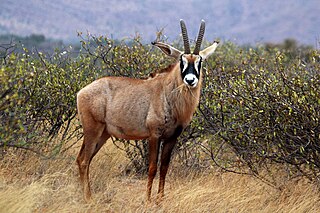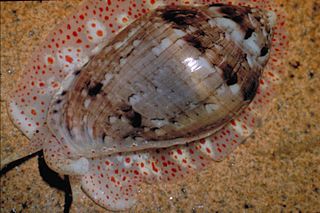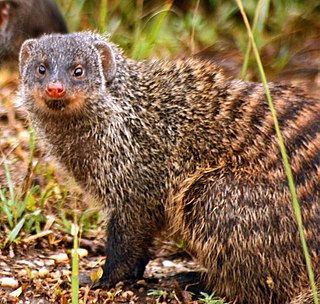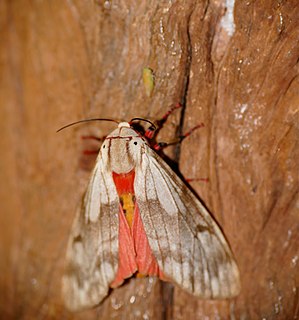
Senegal, officially the Republic of Senegal, is a country in West Africa. Senegal is bordered by Mauritania in the north, Mali to the east, Guinea to the southeast, and Guinea-Bissau to the southwest. Senegal nearly surrounds The Gambia, a country occupying a narrow sliver of land along the banks of the Gambia River, which separates Senegal's southern region of Casamance from the rest of the country. Senegal also shares a maritime border with Cape Verde. Senegal's economic and political capital is Dakar.

Gum arabic, also known as gum sudani, acacia gum, Arabic gum, gum acacia, acacia, Senegal gum, Indian gum, and by other names, is a natural gum consisting of the hardened sap of two species of the acacia tree, Acacia senegal and Vachellia (Acacia) seyal. The term "gum arabic" does not indicate a particular botanical source. In a few cases, the so-called "gum arabic" may not even have been collected from acacia species, but may originate from Combretum, Albizia, or some other genus. The gum is harvested commercially from wild trees, mostly in Sudan (80%) and throughout the Sahel, from Senegal to Somalia. The name "gum Arabic" was used in the Middle East at least as early as the 9th century. Gum arabic first found its way to Europe via Arabic ports, so retained its name. Gum arabic is a complex mixture of glycoproteins and polysaccharides predominantly consisting of arabinose and galactose. It is soluble in water, edible, and used primarily in the food industry and soft-drink industry as a stabilizer, with E number E414. Gum arabic is a key ingredient in traditional lithography and is used in printing, paint production, glue, cosmetics, and various industrial applications, including viscosity control in inks and in textile industries, though less expensive materials compete with it for many of these roles.

Chamaeleo is a genus of chameleons in the family Chamaeleonidae. Most species of the genus Chamaeleo are found in sub-Saharan Africa, but a few species are also present in northern Africa, southern Europe, and southern Asia east to India and Sri Lanka.

The Gambia River is a major river in West Africa, running 1,120 kilometres (700 mi) from the Fouta Djallon plateau in north Guinea westward through Senegal and The Gambia to the Atlantic Ocean at the city of Banjul. It is navigable for about half that length.

The giant eland, also known as the Lord Derby eland, is an open-forest and savanna antelope. A species of the family Bovidae and genus Taurotragus, it was described in 1847 by John Edward Gray. The giant eland is the largest species of antelope, with a body length ranging from 220–290 cm (86.5–114 in). There are two subspecies: T. d. derbianus and T. d. gigas.

The roan antelope is a savanna antelope found in West and Central Africa. It is the namesake of the Chevaline project, whose name was taken from the French Antilope Chevaline.

The western red colobus, also known as the bay red colobus, rust red colobus or Upper Guinea red colobus, is a species of Old World monkey in West African forests from Senegal to Ghana. All other species of red colobuses have formerly been considered subspecies of P. badius. It is often hunted by the common chimpanzee. In 1994, western red colobus monkeys infected many chimpanzees with Ebola virus when the chimpanzees hunted the monkeys as prey.

Marginella is a genus of small tropical and temperate sea snails, marine gastropod molluscs in the family Marginellidae, the margin snails. It is the type genus of the family.

Calliostoma is a genus of small to medium-sized sea snails with gills and an operculum, marine gastropod molluscs within the family Calliostomatidae, the Calliostoma top snails. Previously this genus was placed within the family Trochidae. Calliostoma is the type genus of the family Calliostomatidae.

The wildlife of Senegal consists of the flora and fauna of this nation in West Africa. Senegal has a long Atlantic coastline and a range of habitat types, with a corresponding diversity of plants and animals. Senegal has 188 species of mammals and 674 species of bird.
Lemniscomys linulus, commonly known as the Senegal grass mouse or Senegal one-striped grass mouse, is a species of rodent in the family Muridae. It is found in Ivory Coast, Guinea, Mali, and Senegal and its natural habitat is dry savanna. At one time considered to be a subspecies of Lemniscomys griselda, it is now accepted as a species in its own right.

The flappet lark is a species of lark in the family Alaudidae, widespread across Sub-Saharan Africa.
Émile Pinet-Laprade (1822–1869) was a governor of Senegal.

Platycorynus is a genus of leaf beetles in the subfamily Eumolpinae. It is distributed in Africa and Asia.
Epilacydes scita is a species of moth of the family Erebidae. It was described by Francis Walker in 1865. It is found in Ghana, Senegal, Sierra Leone, Cameroon, the Democratic Republic of the Congo, the Gambia, Kenya, Nigeria and Tanzania.

Teracotona rhodophaea is a moth in the family Erebidae. It was described by Francis Walker in 1865. It is found in Botswana, Djibouti, Eritrea, Kenya, Namibia, Senegal, Somalia, South Africa, Tanzania, Togo, Zambia and Zimbabwe.

The West African wild dog is a subspecies of the African wild dog native to West Africa. It is classified as Critically Endangered by IUCN, as it was estimated that 70 adult individuals are left in the wild.
Eryxia baikiei is a species of leaf beetle of Mali and Senegal,. It was first described by Joseph Sugar Baly in 1865, based on a specimen of the species sent to him by the late Dr. Baikie, who had collected it from "the banks of the Niger".

Pseudocolaspis is a genus of leaf beetles in the subfamily Eumolpinae. It contains about 80 species, which are found in tropical Africa.

Temminck's red colobus is a type of red colobus monkey from the Gambia, Casamance, Guinea-Bissau and northwestern Guinea. It has historically been regarded as a subspecies of the western red colobus, and the Integrated Taxonomic Information System maintains this classification, but many recent taxonomies classify it as a separate species.














